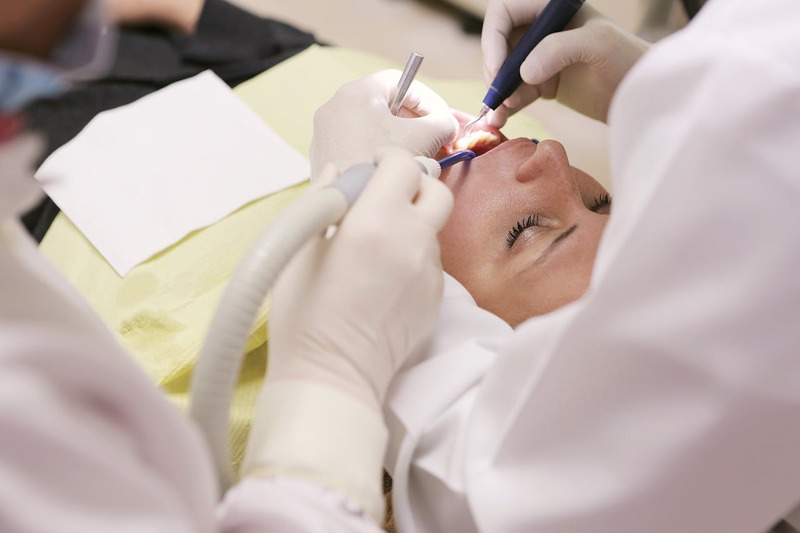Visiting the dentist can be a daunting experience, especially for those unfamiliar with each procedure. Whether you’re having a routine check-up or addressing a specific issue, understanding what to expect can ease much of the anxiety. In this guide, we’ll explore various standard dental procedures simply and casually.
1. Tooth Extractions
Sometimes, a tooth may need to be removed due to decay, crowding, or damage. Tooth extraction is often straightforward, but knowing the process can help ease any worry. The dentist applies a local anesthetic to numb the area during an extraction. You’ll feel pressure, but no pain, as the dentist gently loosens and removes the tooth. Afterward, it’s normal to experience some discomfort and swelling, which can be managed with pain relief and rest.
-
Follow the dentist’s aftercare instructions.
-
Avoid hard foods until the area heals.
-
Rinse your mouth with salt water if recommended.
2. Filling Cavities
If you have a cavity, the dentist will likely suggest a filling to restore the tooth’s structure. The process is relatively quick and often completed in a single visit. The procedure starts with the dentist numbing the affected area. The decayed part of the tooth is removed, and a filling, often made of resin, amalgam, or porcelain, is applied. You’ll be advised to avoid chewing on that side until numbness disappears.
3. Root Canals
A root canal is necessary when a tooth’s nerve becomes infected. This procedure is key to saving the tooth and relieving pain. During a root canal, the dentist drills into the tooth to remove the infected pulp. The canal is then cleaned and sealed to prevent further infection. Many people fear root canals, but with modern techniques, they are no more uncomfortable than a routine filling.
4. Braces and Orthodontics
Orthodontic treatment isn’t just for teenagers. Correcting misaligned teeth or a problematic bite is always possible. Your dentist can recommend the best treatment for your needs, and various options are available, including traditional metal braces and clear aligners. Braces gradually move teeth into the correct position. Depending on individual cases, the treatment typically lasts several months to a few years. Regular adjustments are required to ensure the desired outcome.
-
Maintain good oral hygiene to prevent stains or cavities.
-
Stick to soft or non-sticky foods to protect the braces.
5. Dental Implants
Have you lost a tooth and feel self-conscious? Dental implants might be the solution. They are a long-term option for replacing missing teeth. The process involves placing a metal post in the jawbone, which acts as a root for the replacement tooth. After healing, a crown is attached to the post, giving the look and function of a natural tooth. Though the post takes a few months to integrate with the bone, the results are worth the wait.
6. Cleaning and Polishing
Regular dental cleanings remove plaque and tartar build-up and are essential for maintaining good oral health. During a dental cleaning, the hygienist uses special tools to clean above and below the gum line. The goal of these cleanings is to prevent gum disease and maintain bright, healthy teeth. Afterward, a good polish makes your teeth squeaky clean, leaving you feeling refreshed. Regular check-ups every six months are usually advised.
7. Teeth Whitening
Want to dazzle with a brighter smile? Teeth whitening could be the answer. Whether your teeth are stained from coffee, wine, or tobacco, professionally supervised whitening processes are effective and safe. The treatments range from take-home kits to in-office procedures that lighten teeth in several shades. Expect to find immediate results with professional treatments, which are more concentrated than over-the-counter options.
8. Emergency Dental Care
Dental emergencies, such as knocked-out teeth or extreme toothaches, need immediate attention. Knowing what to do can significantly improve outcomes. Timing is crucial. If a tooth is knocked out, try to place it back in its socket temporarily or keep it moist in milk and visit the dentist as soon as possible. For severe pain, anti-inflammatory medication may provide temporary relief. Dentists often keep some emergency slots open for such situations.
9. Veneers
Thinking about perfecting your smile? Veneers can provide a cosmetic solution to cover imperfections like chips or stains. These thin, custom-made shells are bonded to the front of your teeth. The process requires trimming some tooth enamel. With proper care, veneers can last many years and offer a natural-looking enhancement.
10. Crowns
If a tooth is damaged but salvageable, fitting it with a crown can restore function and appearance. Dental crowns are usually recommended for cracks, fillings too large to support a tooth, or root canals. The procedure begins with reshaping the existing tooth and then making an impression to construct the crown. Temporary crowns are placed until the permanent one is ready. The crown is cemented into place, providing a strong and durable solution.
Key Tips for Your Dental Journey
-
Communicate openly: Don’t hesitate to discuss any concerns with your dentist.
-
Stick to your appointments: Regular visits prevent unforeseen dental issues.
-
Practice good hygiene: Brushing and flossing go a long way in supporting oral health.
Final Thoughts
Understanding these standard dental procedures, from fillings to extractions, can alleviate anxiety and help you make informed decisions about your oral health. Remember, your smile is one of your most significant assets; taking care of it is a lifelong commitment. Maintain open communication with your dentist and keep up with regular visits to ensure your teeth stay healthy and bright for years to come.


